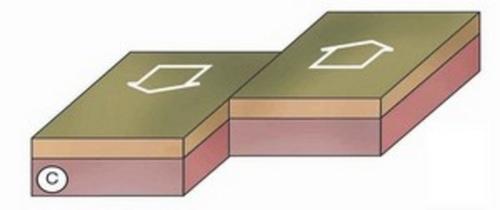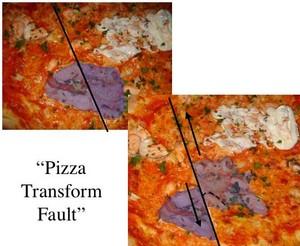Plate Boundaries: transform
Transform Plate Boundary
Image Credit: MBG
A transform plate boundary can be made by cutting a hot pizza into two parts and moving the parts laterally
Image Credit: MBG
c) Transform Plate Boundaries
The third type of plate boundary is the transform fault, where plates slide past one another without the production or destruction of crust. Because rocks are cut and displaced by movement in opposite direction, rocks facing each other on two sides of the fault are typically of different type and age. These structures are so-called strike-slip faults.
When strike-slip movement halts due to increased friction at some location, stresses can build up that are released in sudden slips. These may result in some of the most damaging earthquakes on continental crust. The San Andreas Fault (western US), the North Anatolian Fault (Turkey) or the Dolores-Guayaquil Megafault in the northern Andes are some examples of huge strike-slip faults transecting continental crust.
Mid-ocean ridges are also commonly offset by so-called transform faults; however, because of their association with tensional spreading centers and the different nature of oceanic crust, earthquakes generated there are typically shallow and therefore weaker.



